Kaziranga National Park is an expansive, 430-square-kilometer wildlife park located along the banks of the Brahmaputra River in Assam, India. This Kaziranga National Park Travel Guide will break down everything you need to know before you go there, what to do in and around the park, where we recommend you stay, and much more.
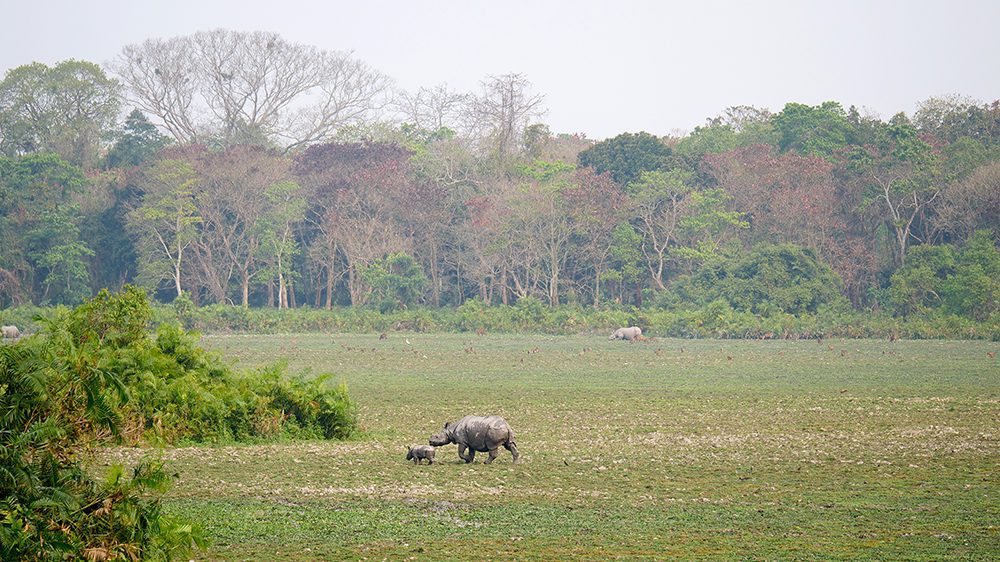
In addition to its status as a national park, Kaziranga National Park is also a tiger reserve and UNESCO World Heritage Site. The park is well known for its high concentration of majestic and ancient-looking one-horned rhinos. Other animals that can be seen within the park include Asian elephants, macaques, deer, water buffalo, and more.
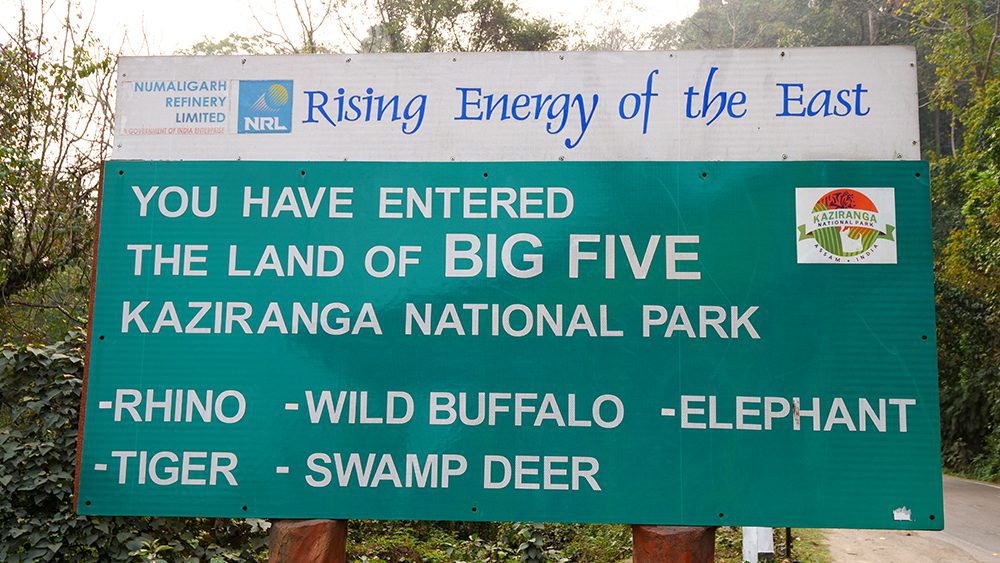
The area around the national park also boasts lots of attractions and accommodations for travelers, as well as lots of dynamic food options. Find out everything you need to know about the park by reading our Kaziranga National Park Travel Guide below!
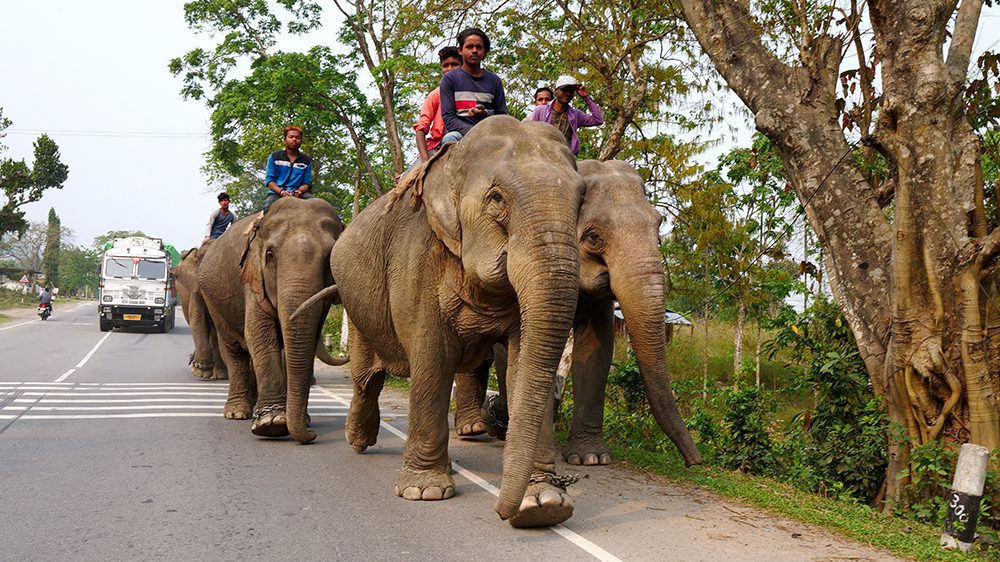
Before you travel to Kaziranga National Park, take note that the park is not accessible during the rainy season from June to August. During this season, the monsoon is in full swing and causes the nearby Brahmaputra River floods its banks, sending water flowing into the park.
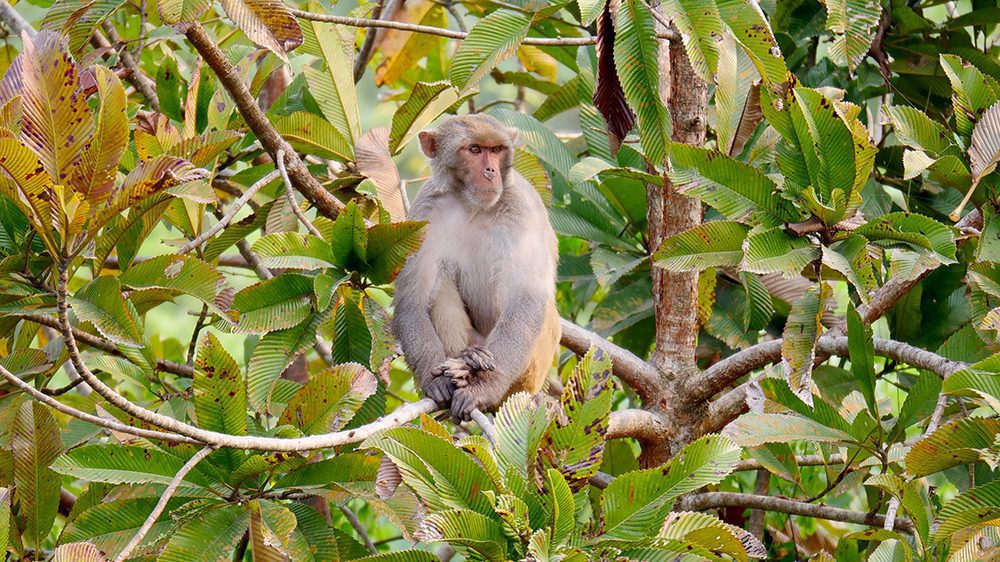
The ideal time of year to visit Kaziranga National Park is November to April, when the days don’t typically become sweltering. The nights during these months can get a little cool. The park can also be visited from April to June, but keep in mind those months are a lot hotter and can make exploring the park much more of a chore.

I visited in March and had a wonderful time. The weather wasn’t too hot, and I was able to see a lot of extraordinary animals.

Because Kaziranga National Park enjoys a tropical climate for most of the year, you’ll need to dress accordingly. In this Kaziranga National Park travel guide, I suggest wearing layers, especially during your early morning game drives if you visit during the winter or spring months like I did. I typically started off wearing a hoodie over a T-shirt early in the morning. Then I would shed that hoodie as needed as the temperature climbed throughout the morning.
Check out Top 10 Things to See and Do in Guwahati, India
You’ll also want to bring along a hat to keep the sun out of your face and eyes. To protect your skin from the hot Indian sun, I highly advise bringing along sunscreen, even if you’re not prone to sunburn. Apply it liberally to any exposed skin before you leave on any excursions into the park and reapply every few hours to maintain protection throughout the day.

Finally, I also suggest wearing insect repellent. Mosquitoes and other flying, biting insects are plentiful in Kaziranga National Park, and spending an entire game drive getting bitten is no one’s idea of a fun time. During my time in Assam, the mosquitoes were relentless, so do everything you can to keep them away from you!

Kaziranga National Park is located midway between Tezpur and Jorhat, so the park is easily accessible by car from both cities. Jorhat, which is roughly 60 miles away, can be reached by road or by air. Its airport is the closest airport to the national park and is a great option for those who prefer to fly in. The park can also be reached by driving 134 miles from Guwahati.

The park can also be reached by train. The nearest station to the park, Furketing, is 46 miles away, so you’ll still have to drive or take a taxi to reach it. Another way to reach Kaziranga National Park is by bus, which you can catch from either Jorhat or Guwahati. Guwahati can be reached by air from the city of Kolkata.
Whenever you travel in foreign lands, make sure you have an ample amount of the local currency on you. This is no exception at Kaziranga National Park. Make sure you have more than enough money on you to cover entry fees and all of the activities you want to participate in. This Kaziranga National Park travel guide also advises tourists to keep extra money on them in case of an emergency.
Check out Top 10 Thing to See and Do in Shillong, India

There are several great accommodations in the general vicinity and each one offers something different. They also vary in price and distance from the park entrance. Research each of them to figure out which one is best for you and your budget. Also, make sure your reservations at your accommodation are in order before you leave for the park.
While touring the park and getting an up-close look at the native wildlife is the main reason to come to Kaziranga National Park, there are many other activities you can enjoy during your stay. This includes delicious meals, gorgeous local attractions, and beautiful cultural experiences. Here is a breakdown of the activities I recommend taking part in when you come to Kaziranga National Park.
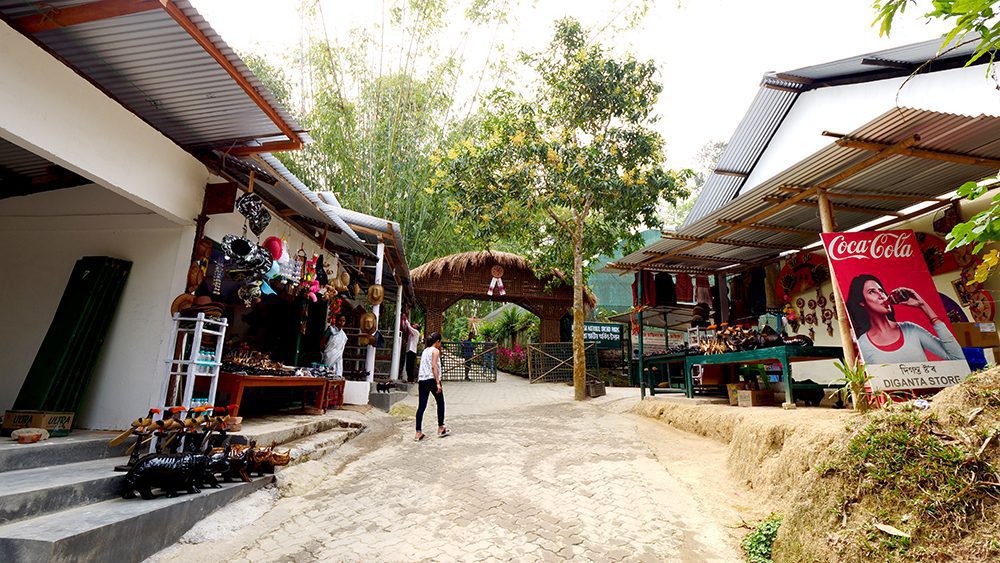
One of the best places in the area to experience the local culture and cuisine is Kaziranga National Orchid and Biodiversity Park. Here, you can take a deep dive into both while enjoying peaceful, tranquil surroundings and learning about the local fauna.
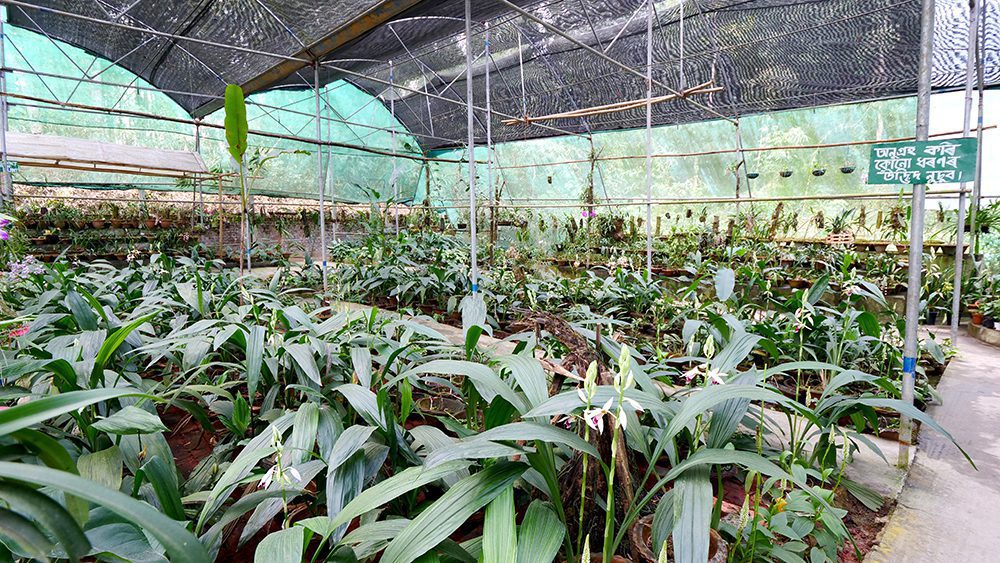
The Kaziranga National Orchid Park is a must-visit. It was established in 2015 and is home to the largest collection of orchids in all of India. There are 600 species of orchids in the park’s greenhouse. These stunning flowers come from all over northeast India and include the state flowers of Assam and Sikkim.

You’ll also come across rare varieties of orchid inside the greenhouse, so take some time to walk among the flowers to check them all out. Just remember that touching the plants is not allowed, so admire them with your eyes instead of your hands!
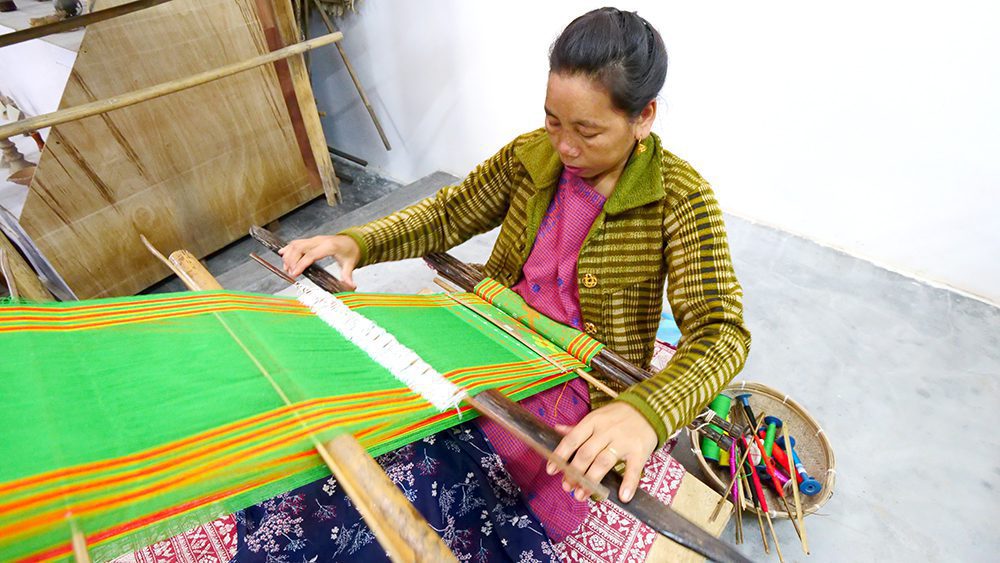
Within this bio-diversity park, you can also get a real sense of local life at the Assam National Museum. Upon your visit, you’ll learn some information about the 97 tribes of Assam and may be able to watch local tribespeople making traditional clothing on looms.
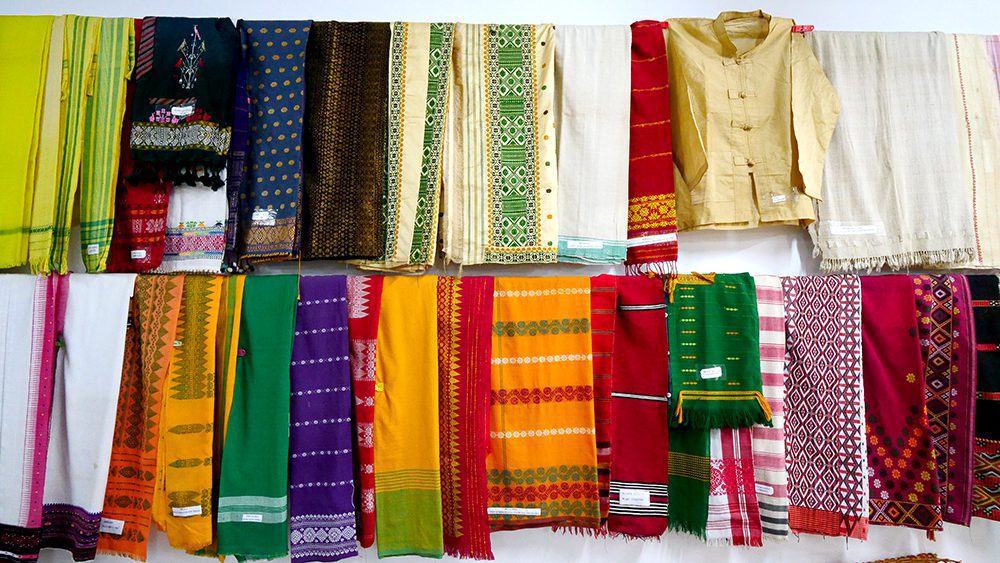
There, you can also learn how the tribespeople make natural dye and use it in the clothing they make. Displayed around the walls are dozens of instruments that are used in everyday life, as well as artifacts and beautiful, locally made masks.
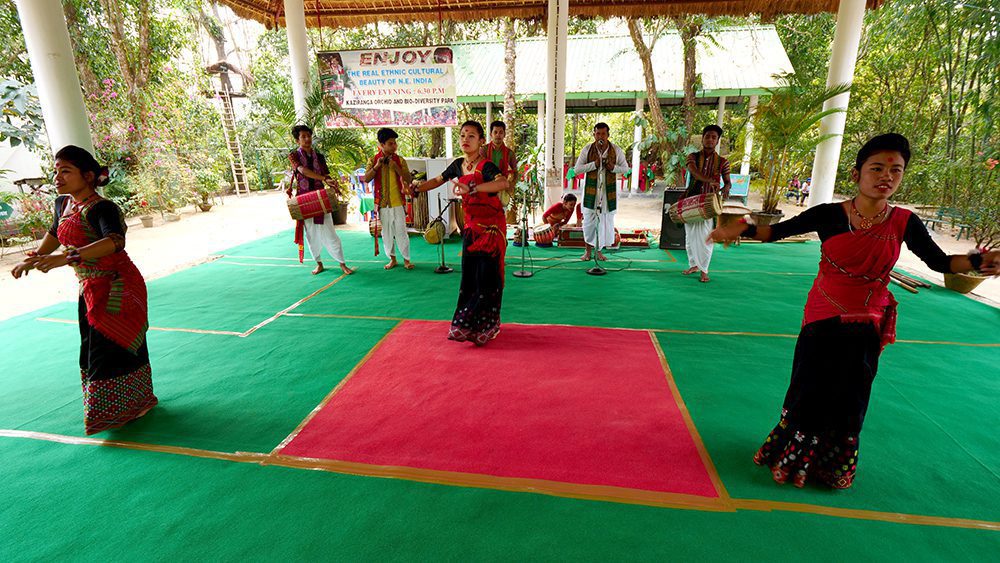
One of my favorite things about traveling is learning about the culture of the places I visit by experiencing it first-hand. During my time at the Kaziranga Orchid and Bio-Diversity Park, some of the local women were kind enough to gift me a colorful and exquisite scarf that was made by members of the Bodo tribe.
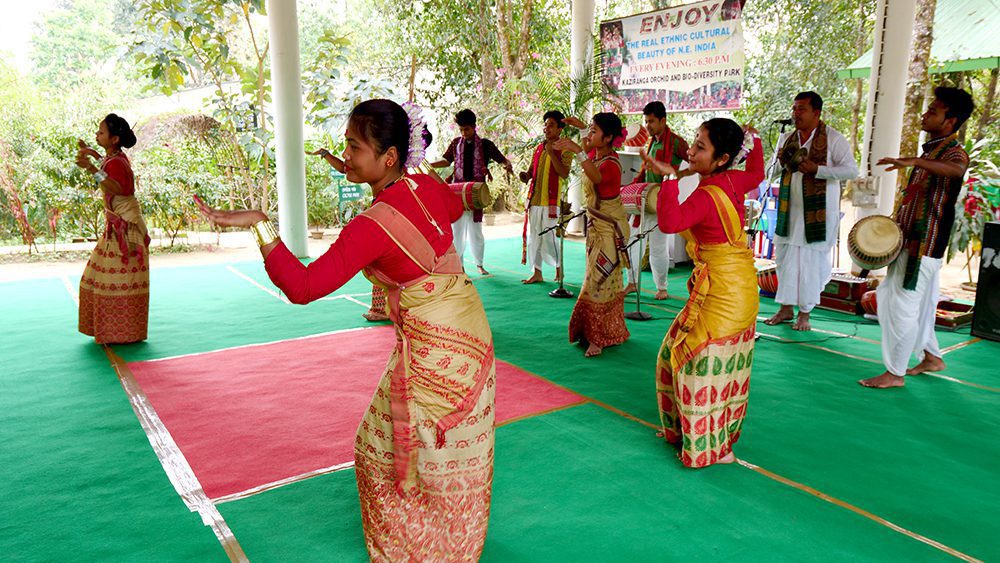
To see even more of the local culture in action, this Kaziranga National Park travel guide highly recommends taking some time to visit the park’s pavilion.
Check out Majuli Island Travel Guide in Assam, India
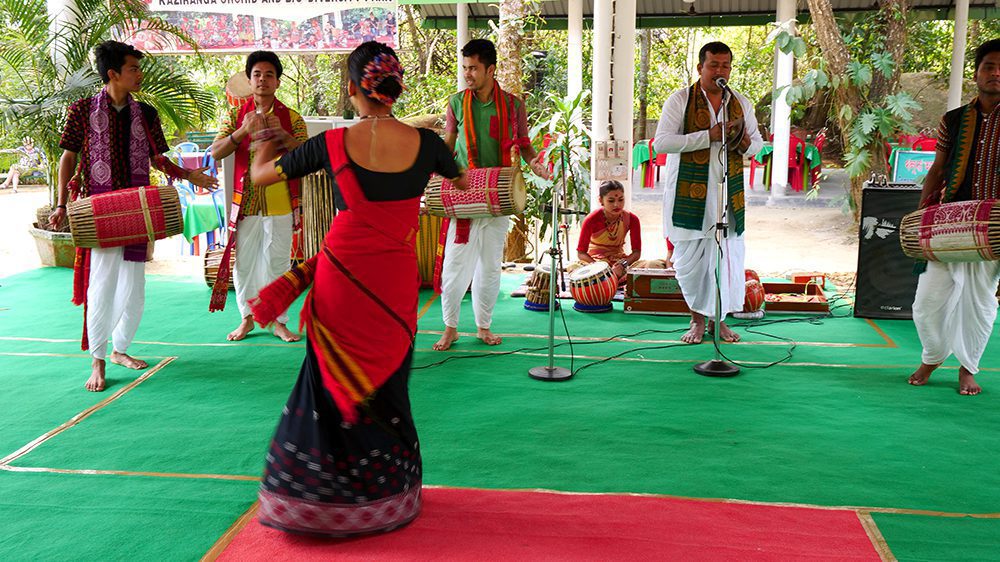
There, seats are arranged in front of a large, covered stage, from which visitors can watch the dance performances that are put on by the locals. There are three different dances in total. All three dances are beautiful and quite different from one another, but perhaps the most fascinating was the bamboo dance.
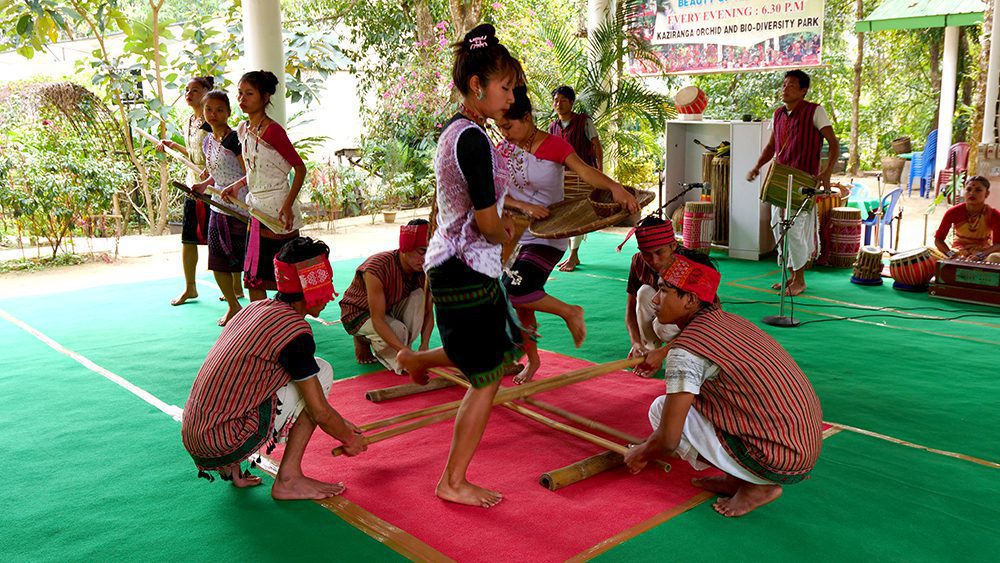
The bamboo dance involves local men clapping long, bamboo poles together low to the ground in conjunction with rhythmic drumming. Local women join in by dancing in a circle between the bamboo poles as the men open and close them to the beat of the music.
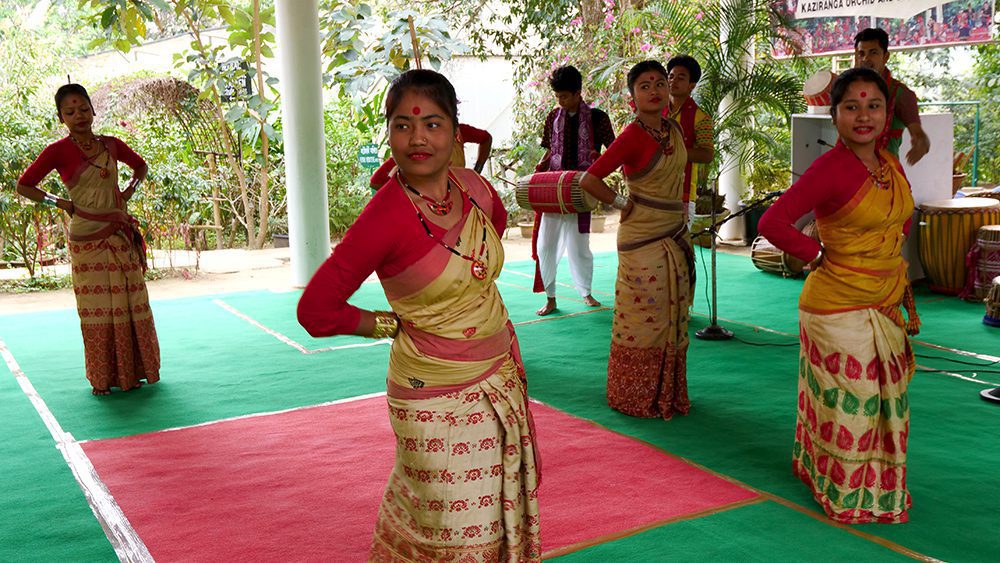
It’s quite beautiful and is also a demonstration of extreme precision!
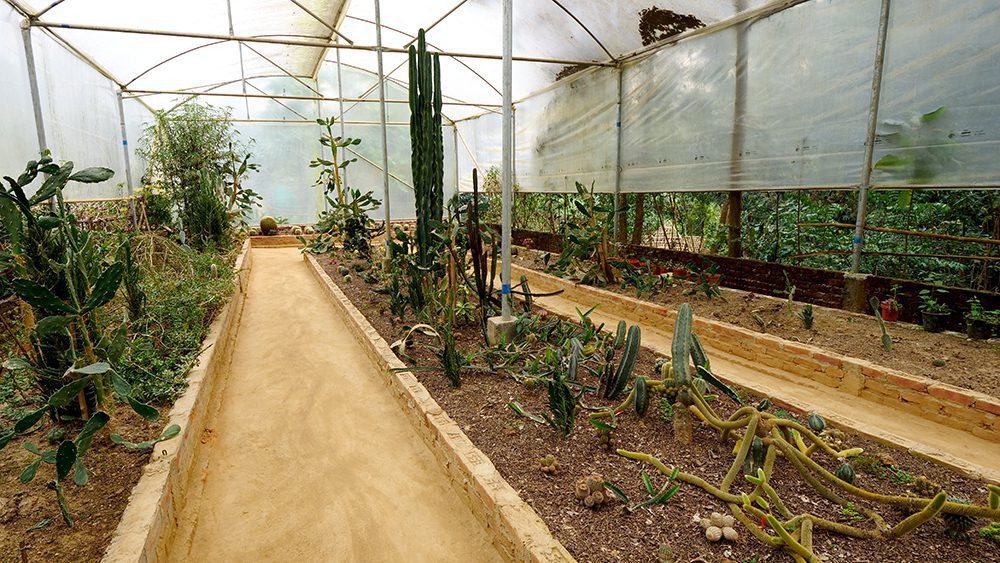
Also on-site is Cactus Park, which is home to over 300 species of cacti from around the world. Most of the cacti there are from the northeastern state of Sikkim. Growing in the park is a variety of medicinal plants and others that are used in cooking.

One of the plants used in the cuisine is stevia, which is used as a natural sweetener. I was able to sample a fresh stevia leaf during my visit. It was pretty sweet but also had a slight bitterness to it.
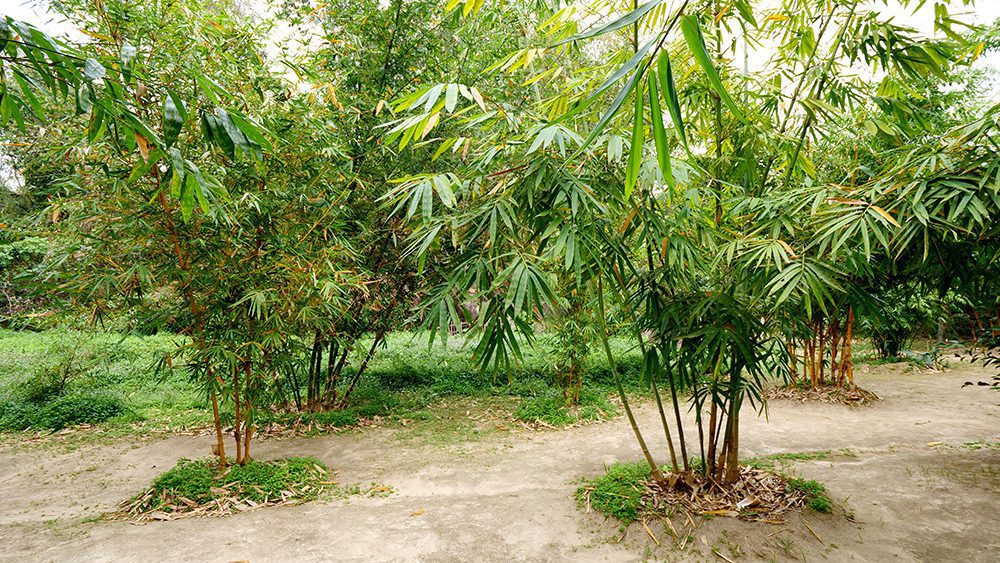
Be sure to also check out the bamboo garden, where you’ll find 50 species of the hardy plant. Bamboo has many uses in this part of India, including making crafts. It’s also used in the local cuisine and is really yummy!

One of the best ways to learn about any destination that is new to you is to try the food and drink. This Kaziranga National Park travel guide recommends trying lots of local drinks, including a fresh, sweet orange juice with a touch of black salt; a thick and heavy apple juice with milk and sugar; and a dense, shake-like banana juice also with milk and sugar.

There are also local snacks, but my favorite thing I ate at the Kaziranga Orchid and Bio-Diversity Park was the Assamese thali. The thali consisted of 28 dishes including a mouthwatering brinjal, or eggplant; some phenomenal starfruit; a super tasty ceviche-like black fish snake chutney; spinach-like arum leaves; some meaty jackfruit; and much more.
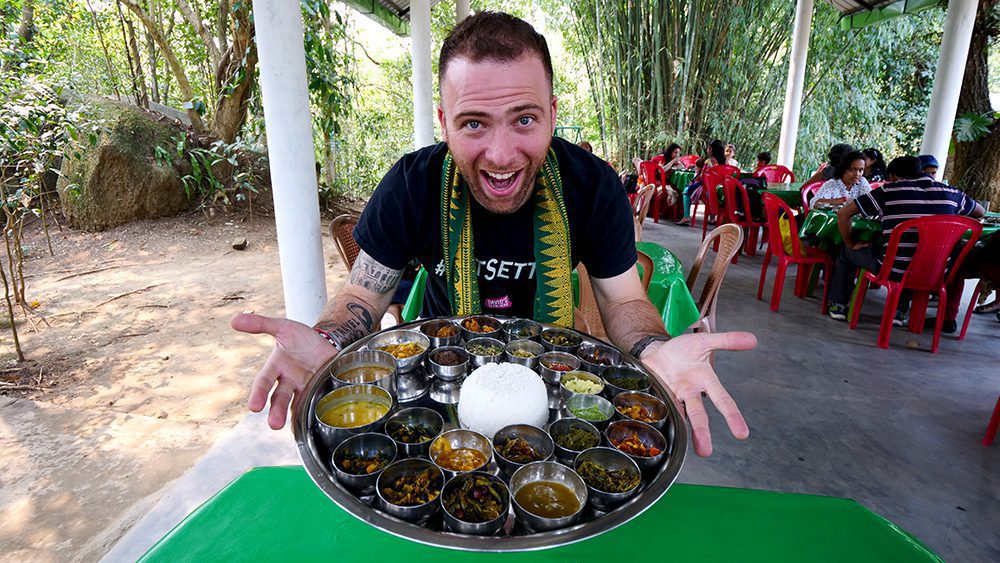
The thali was all veg with the exception of the black fish snake chutney and was one of my favorite culinary experiences in Kaziranga National Park. It was also very inexpensive at only 160 rupees, or roughly $2.30 U.S.
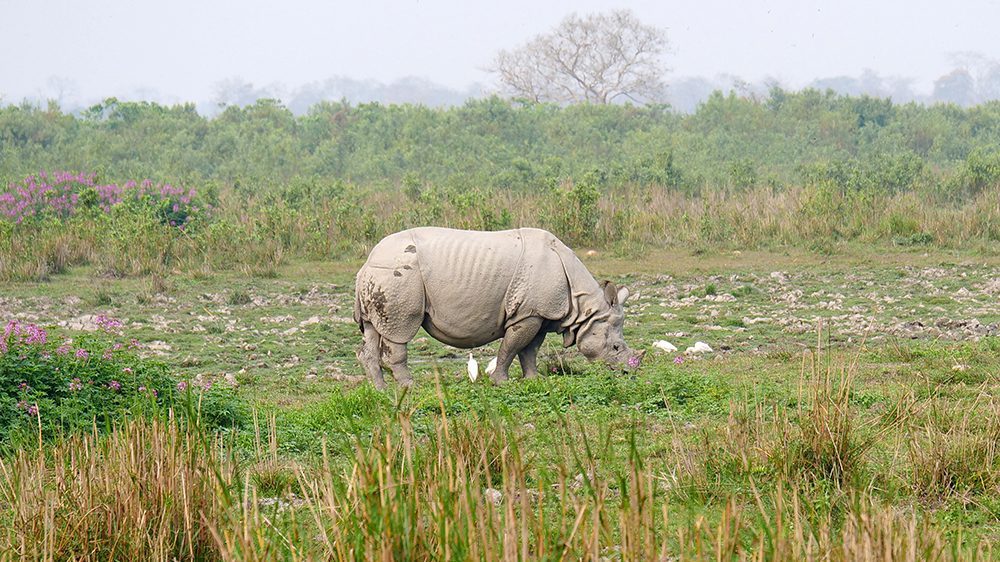
Without question, the highlight of most trips to Kaziranga National Park are the excursions into the park itself. Game drives can be taken by Jeep into the park twice per day: once between 7:30 a.m. and 11 a.m., and once between 2 p.m. and 4:30 p.m.
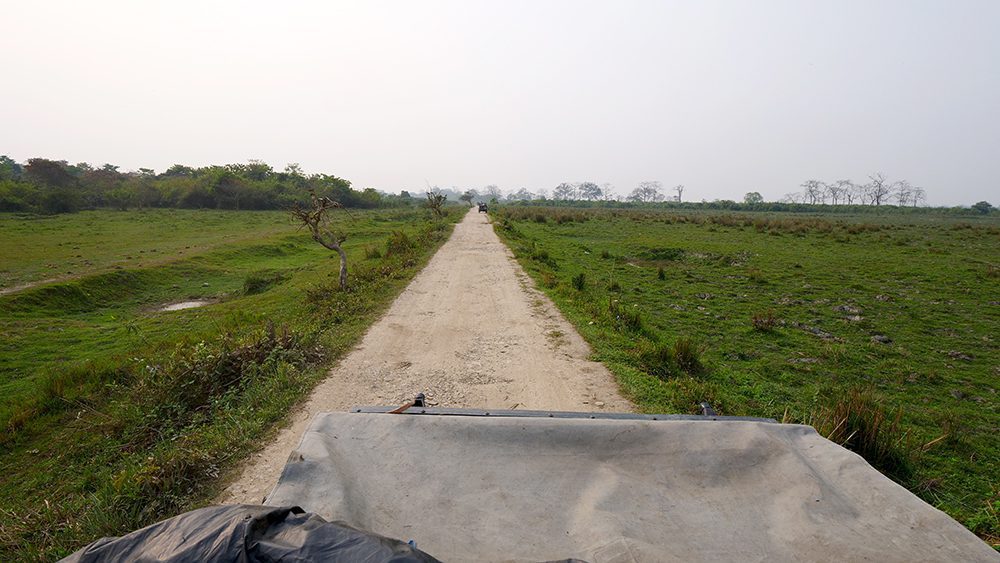
Jeep safaris can be booked on the spot. Because the cost is per Jeep, you may want to join a group of other tourists to lessen your individual cost if you’re exploring on a lower budget. However, this Kaziranga National Park travel guide recommends booking solo for the best experience if you can manage it.
Check out Manas National Park Travel Guide in Assam, India

While you’re on a game drive, there are a few things you must remember, not only to have the best experience possible but also to maintain your safety. All game drives are different. They’re very much luck of the draw in terms of which animals you see, if you see any at all. Keep your expectations low and then if you come across something impressive, it’s like a bonus!

The other thing you must remember is to never get out of the vehicle during your game drive unless you’re at a lookout point and your guide says it’s okay. Also, don’t feed any animals you come across because doing so will train animals to approach other vehicles in the future.
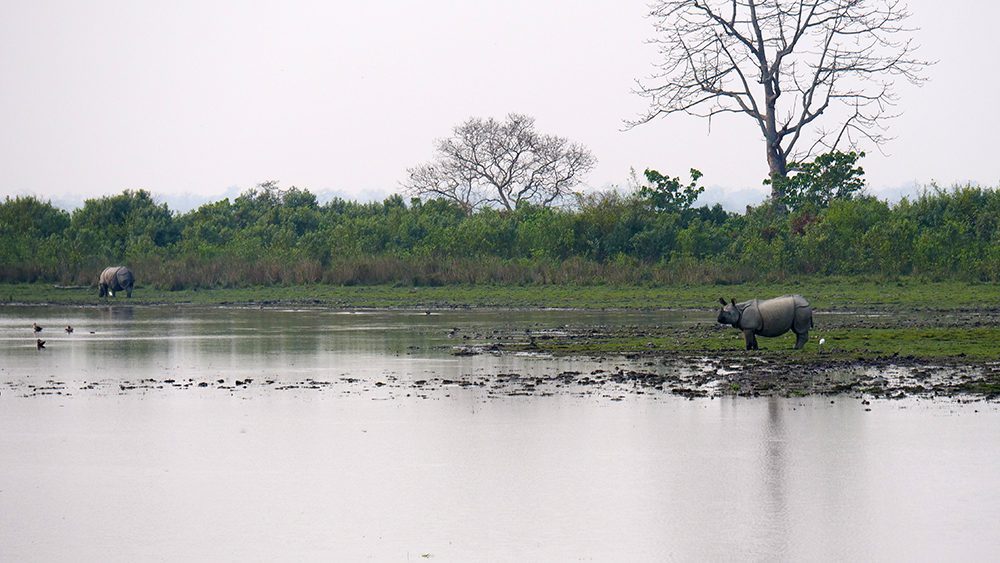
There are four ranges in the park: Central, Western, Eastern, and Burhapahar. Each area is unique and some animals pop up in higher concentrations in certain ranges. For example, the Western range has the highest concentration of rhinos, while the Eastern range is more conducive for bird watchers. In total, the park is home to 2,413 one-horned rhinos and 108 tigers.
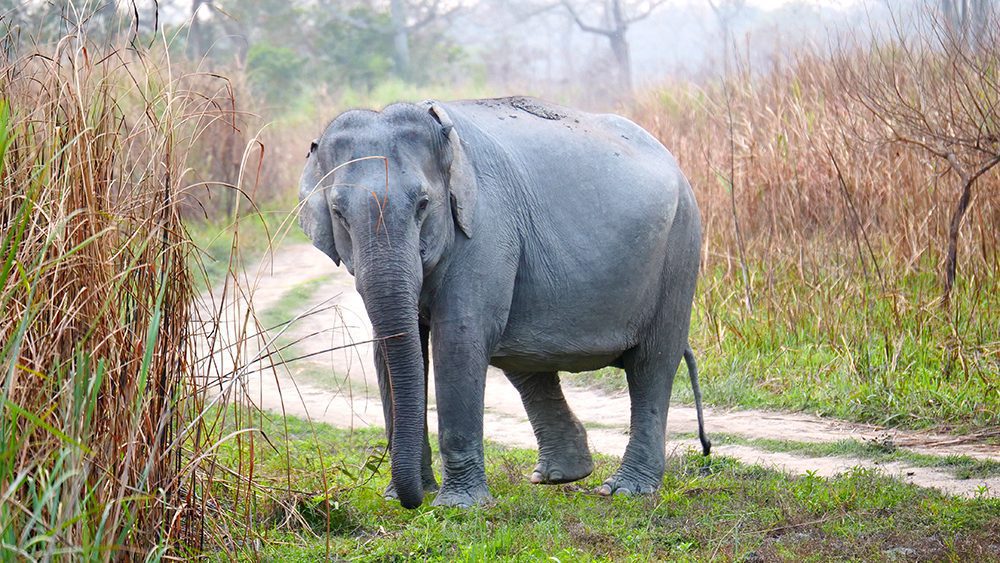
My first game drive in the park was a Jeep excursion into the Western range. There, I saw multiple rhinos, herds of elephants, kingfisher birds, water buffalo, hawk eagles, and deer. It was a real treat to see these majestic animals in the wild.
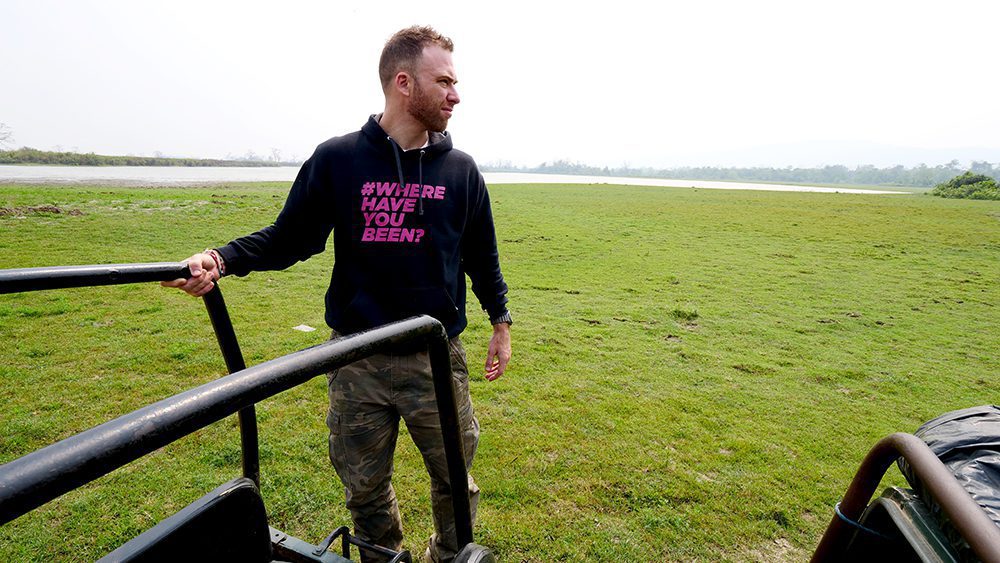
The second game drive I booked took me to the Central range the following afternoon. This game drive was totally different from the first and featured appearances by a rhesus macaque, storks, deer, Bengal monitor lizards, a Burmese python, Assamese roof turtles, and Asian water buffalo!

If you stay at the Wild Grass Resort like I did, you’ll be offered the unique opportunity to enjoy an Assamese meal at a local’s home. The resort will arrange everything for you.

This Kaziranga National Park travel guide highly recommends this experience. It’s a great way to meet the locals and learn about their way of life!
Check out Top 15 Things to See and Do in Ahmedabad, India
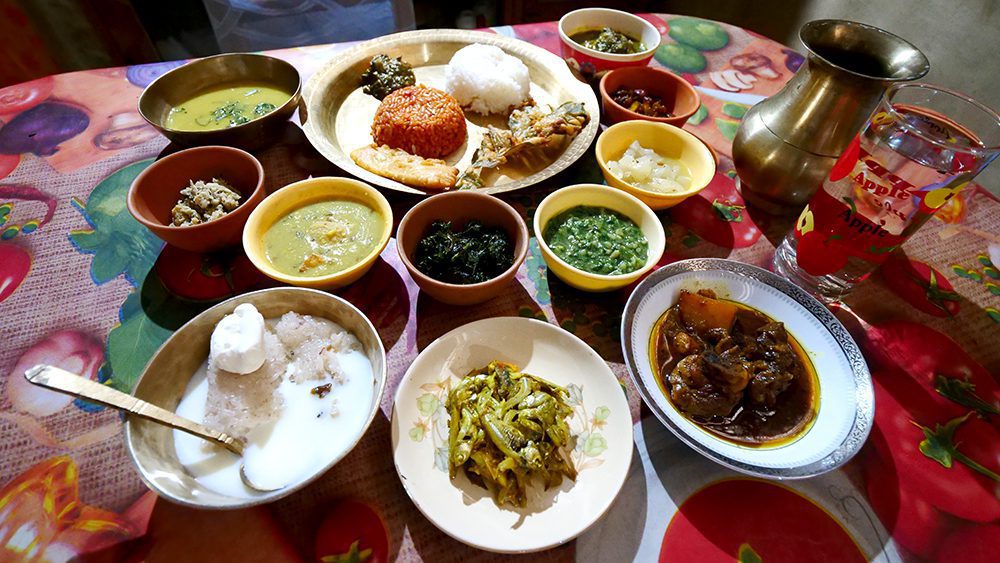
My meal consisted of a jungle Assamese thali with sixteen delicious items including tiny fish, dal, rice, chicken curry, fried green bananas, elephant apple dal, bamboo shoots with fish, a spicy eggplant mash, and much more. It was so flavorful and beyond amazing. You have to try this meal!
You will incur lots of fees in order to explore Kaziranga National Park, but keep in mind, they’re more than worth it for the experience you’ll have. Here is a list of all of the fees for foreigners. Keep in mind that Indian residents will pay significantly less and that exchange rates are approximate.

This Kaziranga National Park travel guide recommends staying at the Wild Grass Resort just outside the park. This attractive collection of lodges offers 18 double rooms in 2 jungle lodges and three tents pegged under a high, thatched room.
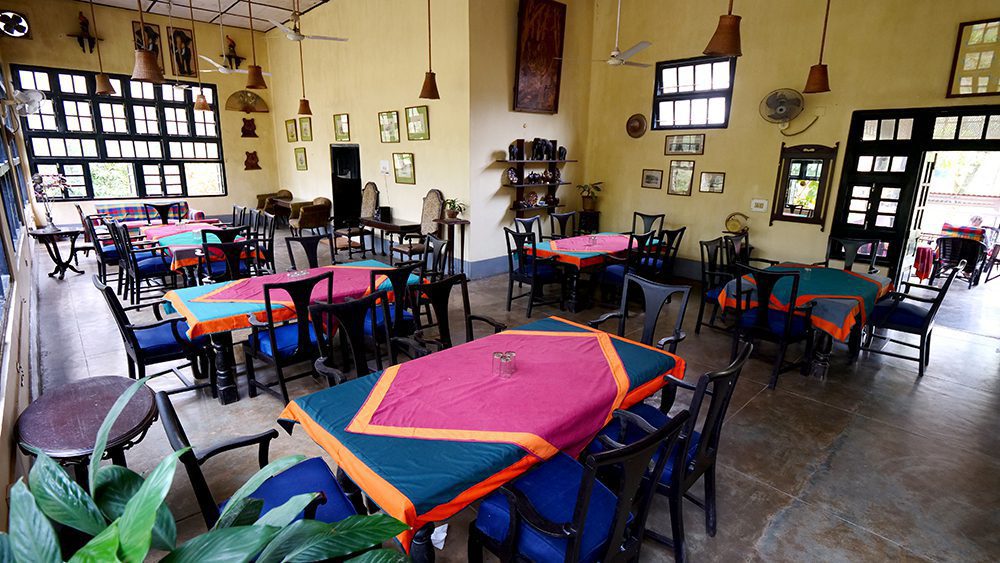
They really take care of you at the Wild Grass Resort! My friend and contact there, Honey, is as kind and as friendly as they come, and the resort offers tons of activities, including visits to the local tribal village, a tea garden visit, a Jeep safari, and trekking in the nearby forest.
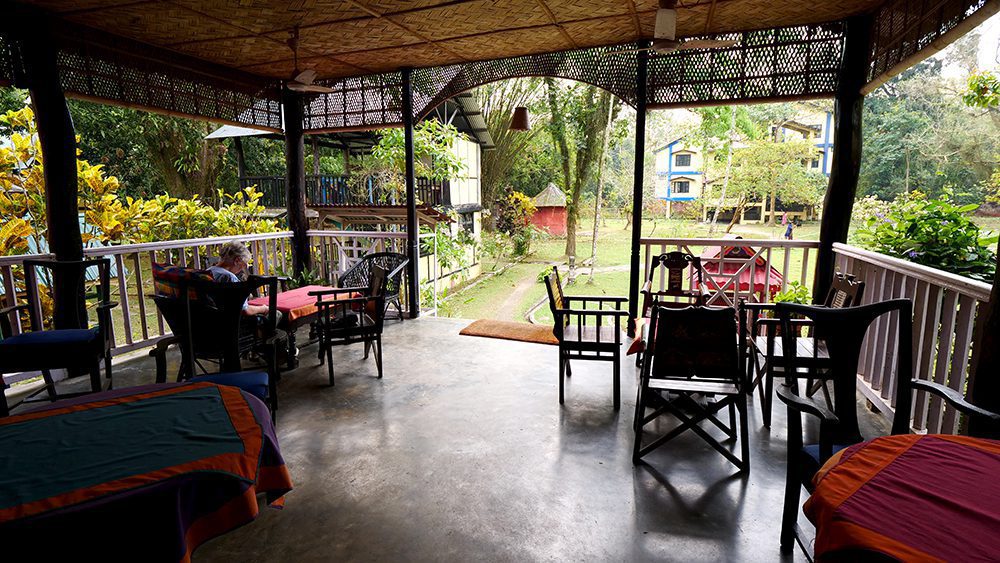
The food that’s offered at the resort is also top notch. I enjoyed an incredible breakfast that consisted of a flaky puri, a dough roll with cabbage and mixed vegetables inside, potatoes, and a slightly spicy mint chutney. This breakfast was so different from others I’d had in India and had my mouth watering!
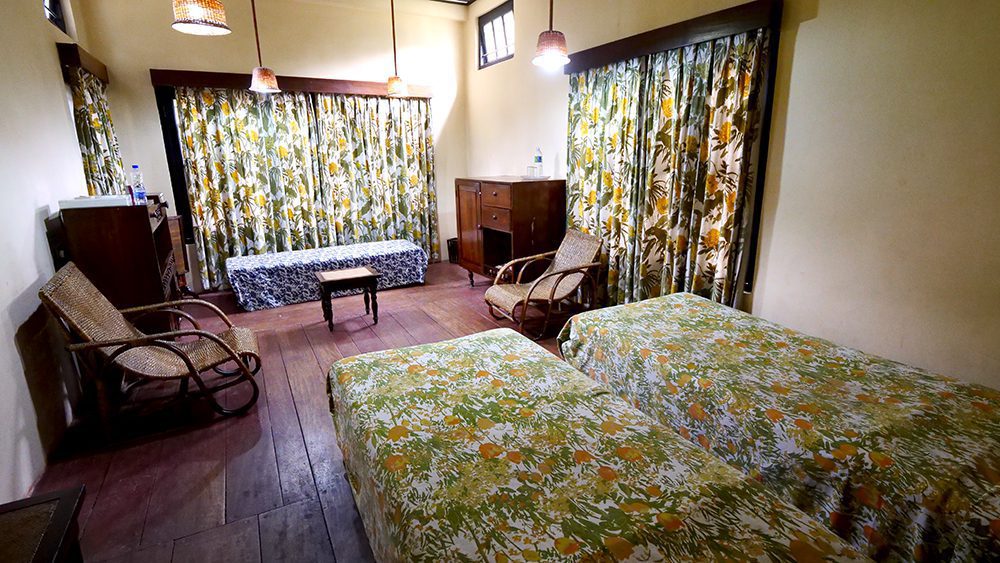
The dinners at Wild Grass Resort are just as flavorful as their breakfasts. This Kaziranga National Park travel guide recommends going with the creamy vegetable soup and the Assamese veg thali. This thali contains scrumptious dishes like lentil mash, yams, fern, khar, deep-fried curry leaves, and much more. It’s a flavor explosion in your mouth. If you’re a foodie like me, you’ll love this thali!
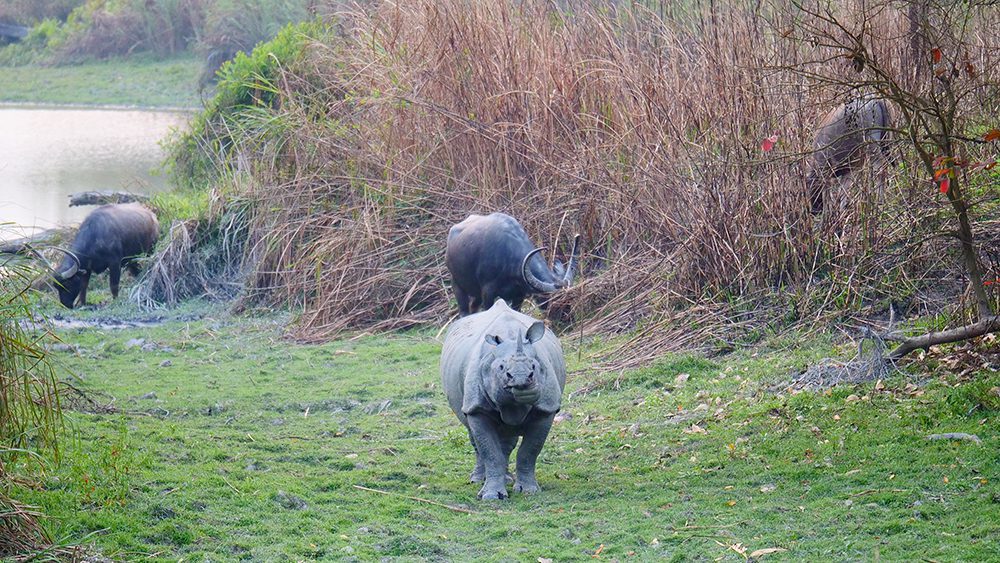
Animal and nature lovers will be in heaven when they come to Kaziranga National Park. Between their exciting game drives, neighboring attractions, phenomenal accommodations, and friendly locals and guides, this is a place everyone must visit at least once. Your time there will stick with you long after you’re gone, and you’ll make delightful memories you’ll want to revisit again and again. Book a trip to Kolkata and arrange transportation to Kaziranga National Park today to experience it for yourself!
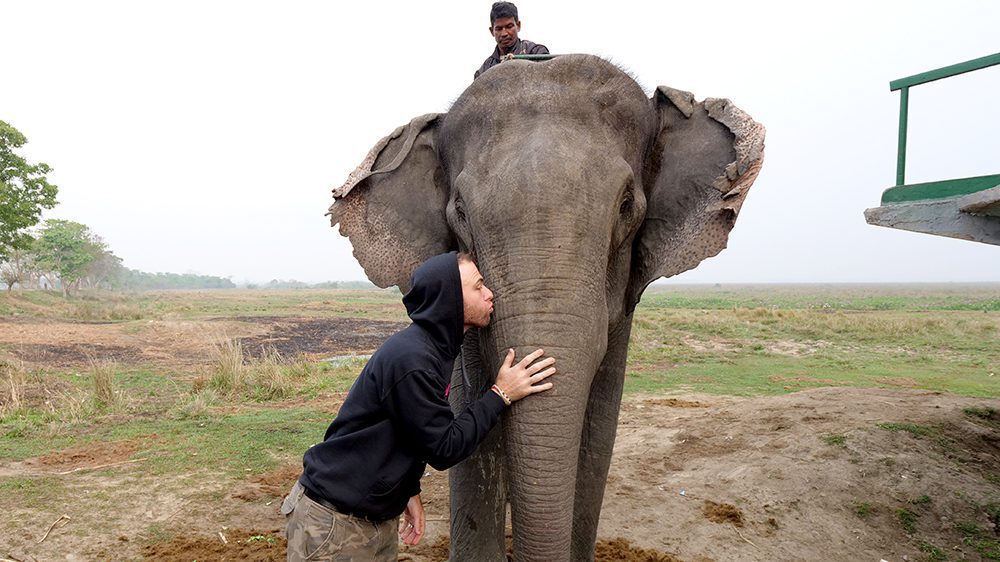
NOTE: Whenever you travel, I suggest you purchase travel insurance to protect yourself in case any emergency situations come up. In my opinion, AXA Travel Insurance is the very best because it covers a wide array of issues. Buy your AXA Travel Insurance protection plan here!
If you need to check the visa requirements of a particular country, click here. To apply for a visa, find up-to-date visa information for different countries, and calculate the cost of a particular visa, click here!
Counter
101 Countries • 1432 Cities